ALL THAT GLITTERS…
Like many of you, I sometimes have been tempted to click on interesting stories and articles that I have spotted on the internet, and like you, I have found that many of them are not all they seem to be. The thing that lured me to click on the story either is not there, very briefly mentioned, or is very deeply hidden in the article. Unfortunately, this sort of thing also happens with regard to some sights in the sky. I wasn’t going to mention it at all in this blog, but since I have received so many questions about it, here is the scoop on Comet ZTF.
The abbreviation “ZTF” refers to the Zwicky Transient Facility, which operates a wide field survey of the sky, searching for objects like supernovae that briefly change enormously in brightness. In the course of the survey sometimes other objects are found, including a new comet on March 2, 2022. Once confirmed by professional astronomers, it was realized that Comet ZTF would pass fairly close to the Sun (103 million miles) on January 12 and fairly close to the Earth (26 million miles) on February 1. It was calculated that at its peak, Comet ZTF might become barely visible to the unaided eye as seen from dark sky locations by experienced astronomers. It has been estimated that the comet is in a very long period orbit and may not have been visible within the last 50,000 years.
There is nothing unusual about any of these things. There typically is a comet as bright or brighter than ZTF every couple of years. The greenish color that shows up in photographs is due to ionized cyanogen gas that is in the comet’s atmosphere and has been seen on many comets before. The great pictures you may have seen have been taken by expert stargazers using elaborate equipment, photo processing, and from very dark locations, and are not representative of what you can actually see. There was no reason why this object should have become an internet sensation, but somehow, it did.
I ventured out about 40 miles from downtown St. Louis late on the night of January 26 in order to view Comet ZTF from a fairly dark location. In spite of very clear skies, my unaided eyes were still not good enough to spot the comet- it needed binoculars, and even then, it just looked like a dim fuzzball. In my telescope, the comet appeared as a bright fuzzball with a vague haze to one side, comprising the tail. In other words, the comet has performed exactly as predicted. I stuck a camera on a tripod and took a couple of images and just minimally enhanced them so that you can see them here:
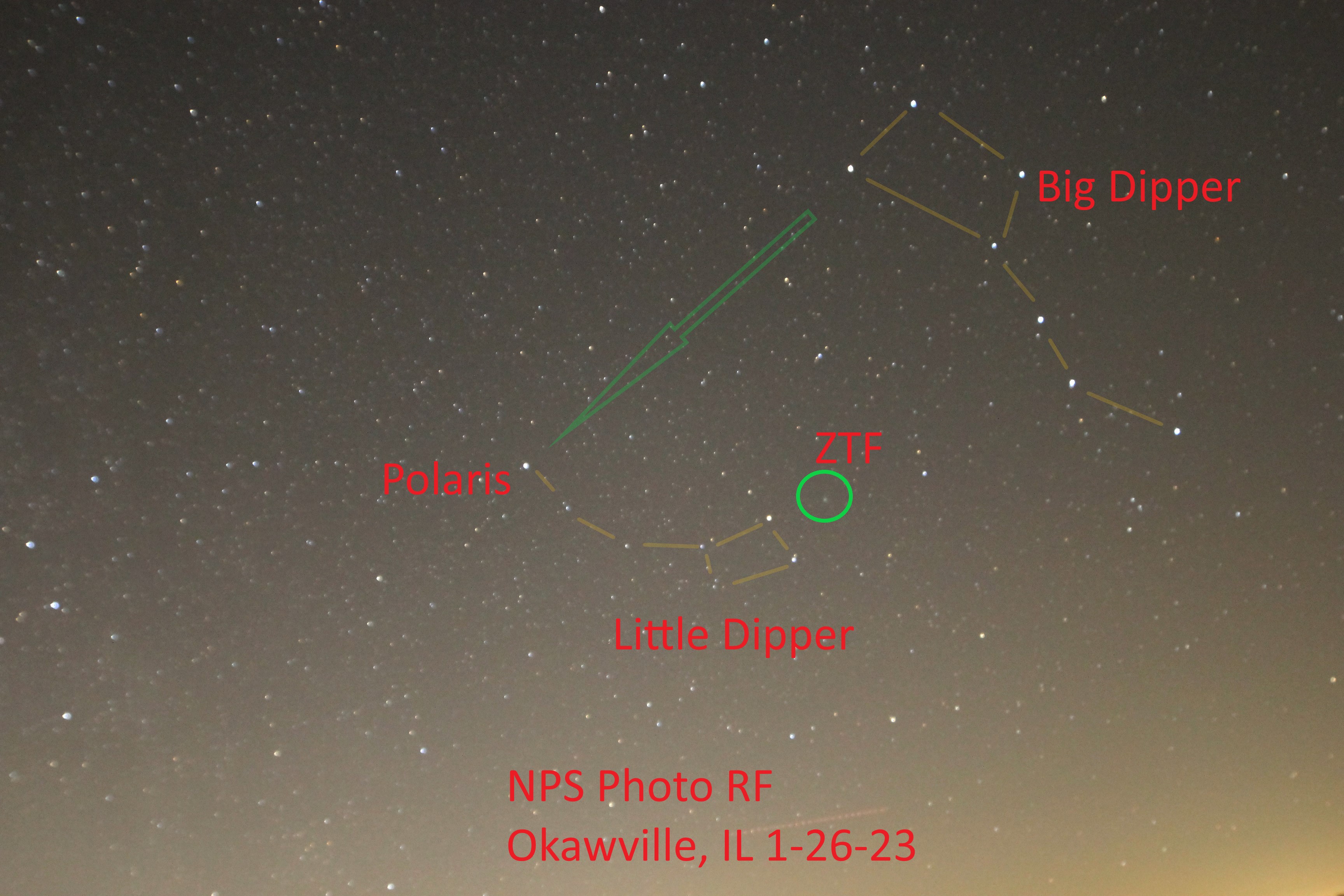
Wide field view showing Comet ZTF as a tiny fuzzy spot near the Big and Little Dippers on the night of January 26, 2023. Photo by our Sky Ranger.
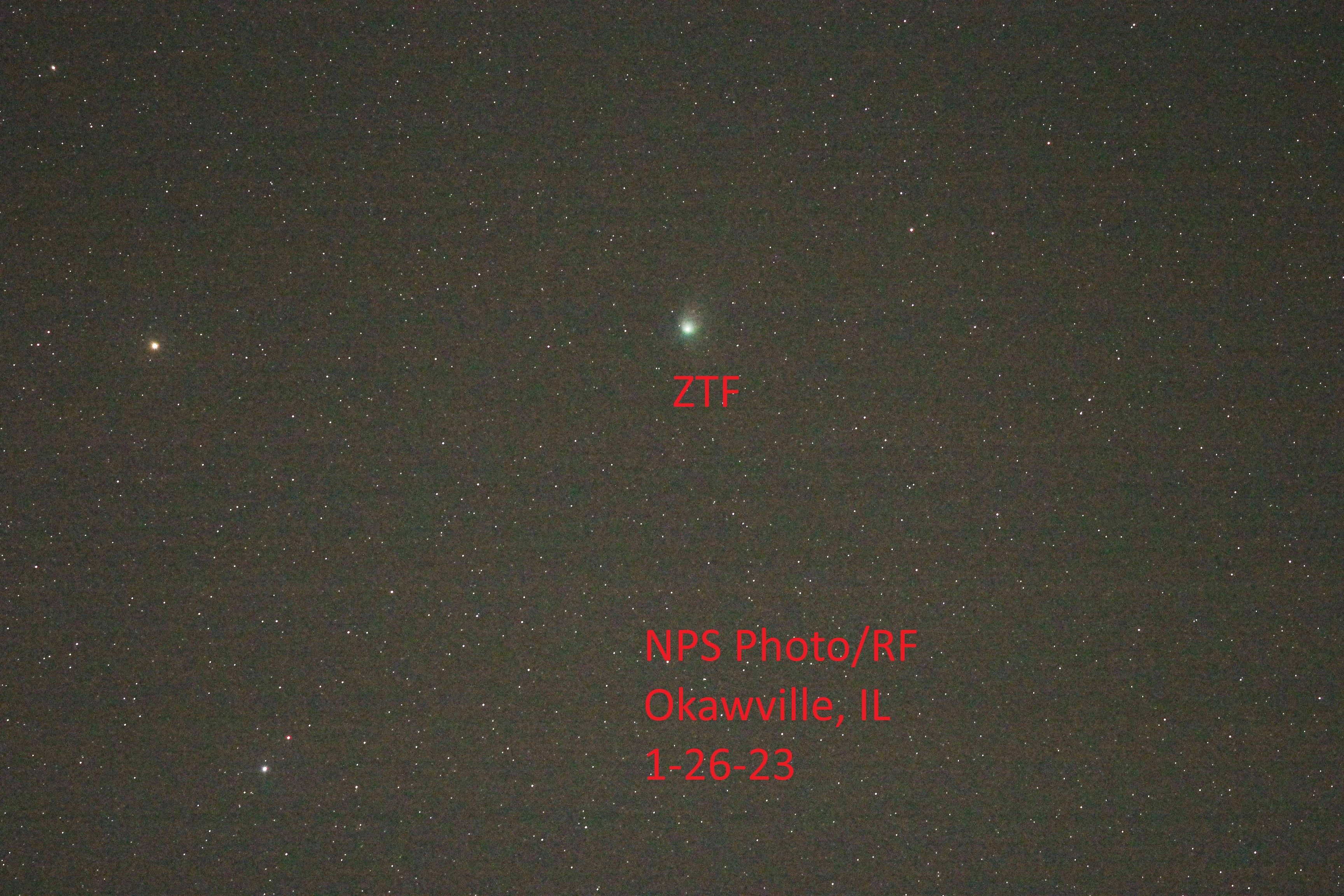
Close up of Comet ZTF on January 26, 2023. Photo by our Sky Ranger.
I have seen about 45 comets and would say that about ten of them were brighter and/or had a more obvious tail than Comet ZTF. I am glad that I went out to see it and will probably do so again, but can’t honestly say that a newbie stargazer would find it to be impressive. In fact, you might have trouble finding ZTF at all, especially if you are near to city lights. If you would like to try to find it anyway, there are many online maps available, or feel free to e-mail me at richard_fefferman@nps.gov and I can give you suggestions. Just don’t expect too much.
Instead of the overhyped ZTF, here’s something I hope you’ll really like! It will be bright enough to be seen through city lights, require no optical aid, and will be visible for several weeks, peaking near March 1st. All you will need to do is to find a spot that is fairly open to the west and go outside about 45 minutes to an hour after sunset. I am referring to the brightest planet in the night sky, Venus, approaching and then passing the second brightest, Jupiter. From our Earth-based point of view, it is Jupiter that appears to be dropping steadily towards the horizon during February and March, while Venus gains slowly in altitude. What is actually happening is that Venus is overtaking Jupiter, closing in on it bit by bit throughout February from our point of view. At the same time, Earth’s faster motion causes Jupiter to appear more and more in the same line on the far side of the Sun, accounting for its gradual drop towards the western horizon. On the night of February 22, the thin crescent moon will appear close by the planet duo and add beauty to the scene. The two planets will appear closest together on the first night of March, about one full moon’s width between them. They will be quite close for a couple of days on either side though, so if skies are predicted to be cloudy, try on a different night.
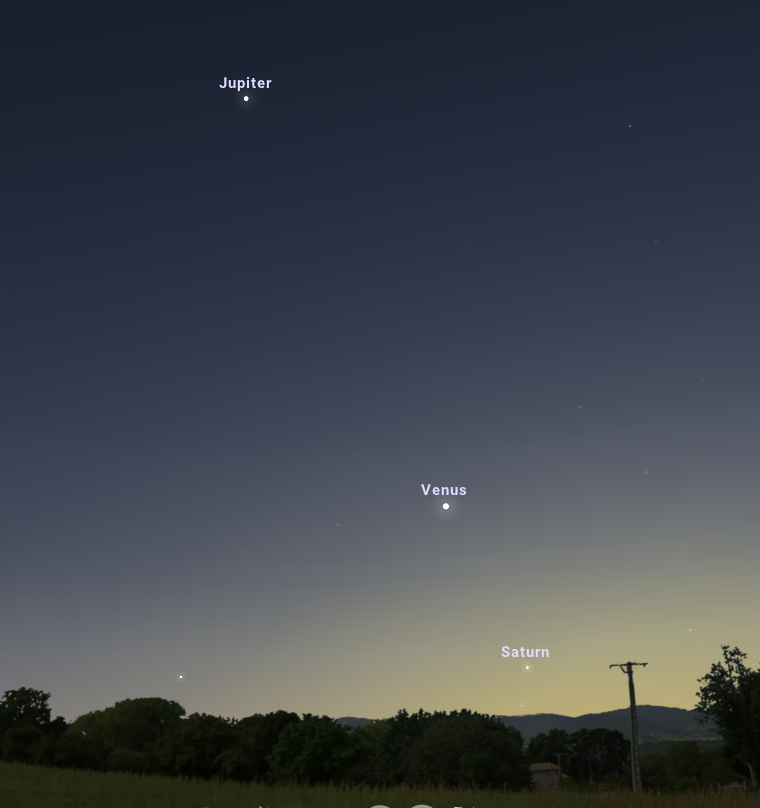
Facing southwest, about 6pm, early February. Saturn will be difficult and need binoculars to be seen in the bright twilight. Courtesy of Stellarium.
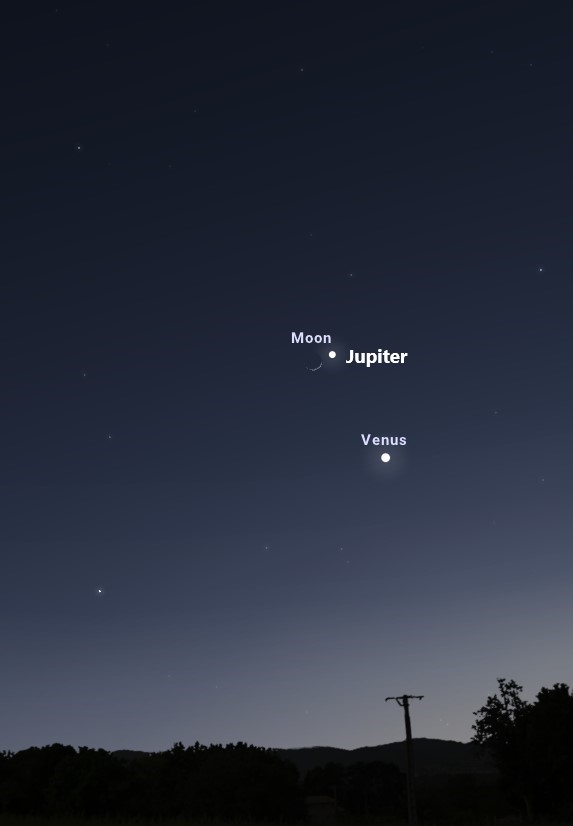
Facing southwest, about 6:30pm on February 22. Binoculars can help get a better view of the thin crescent moon. Courtesy of Stellarium.
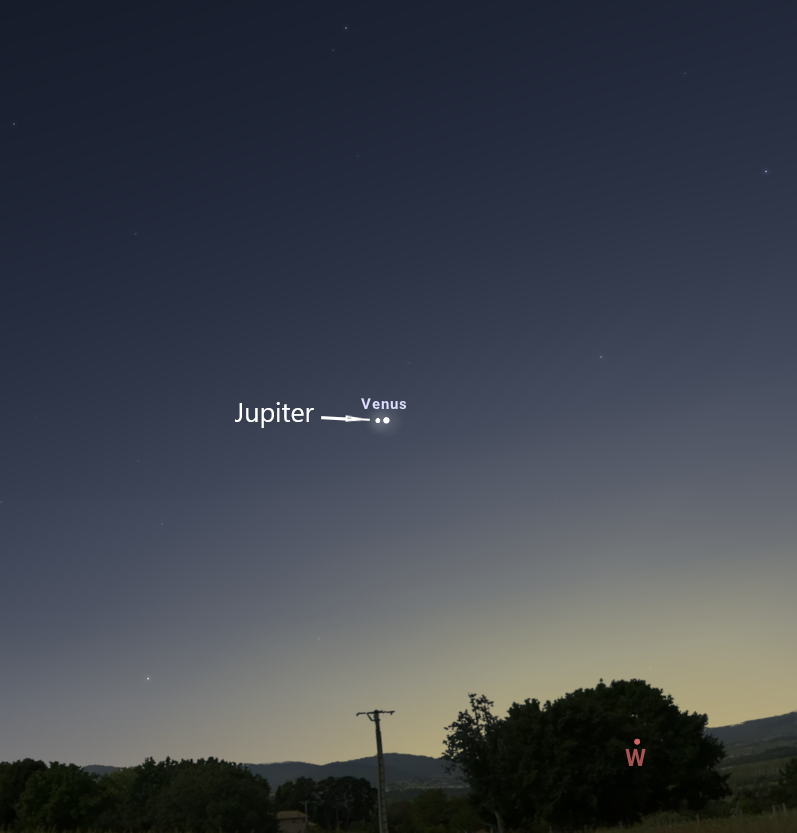
Facing southwest, about 6:30pm on March 1. Courtesy of Stellarium.
